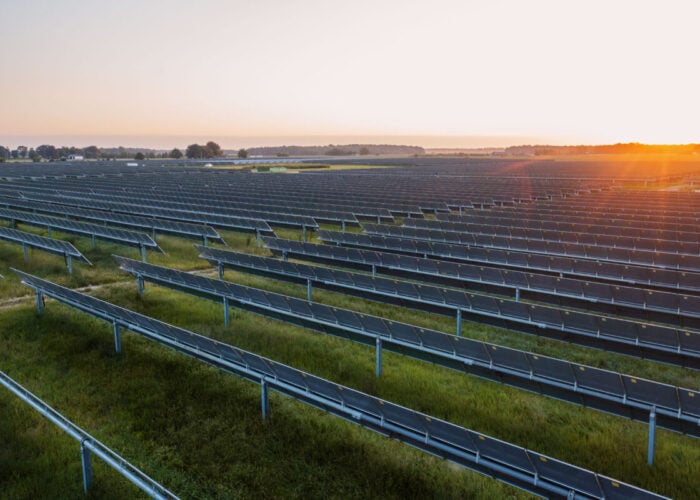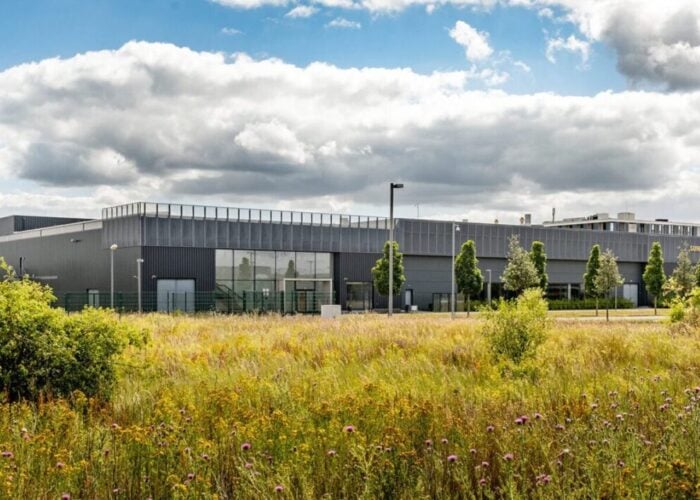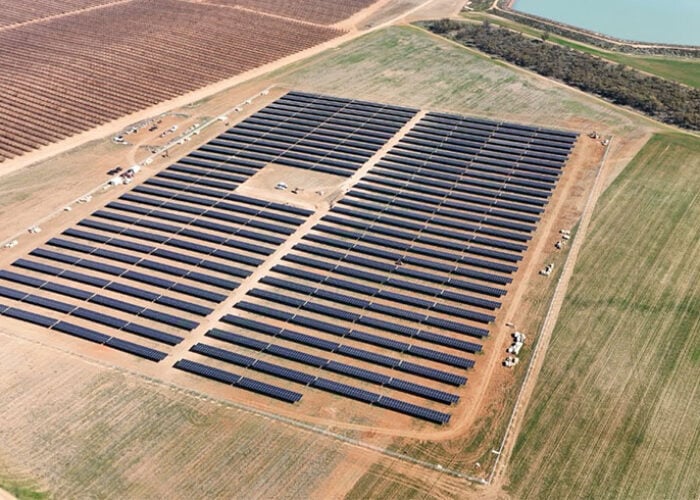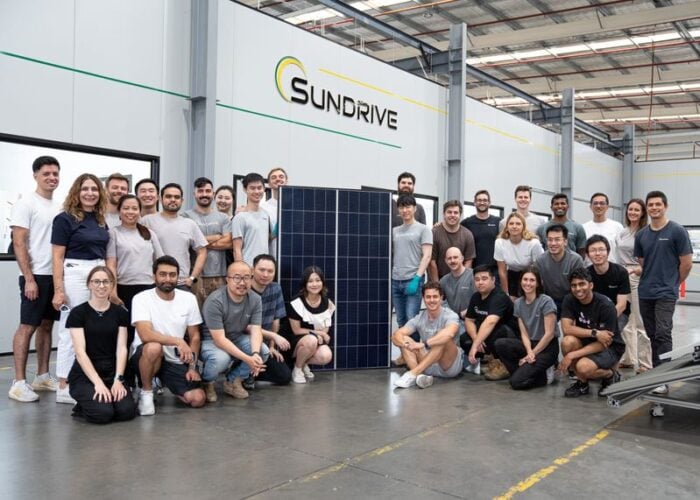
An emerging force in the heterojunction (HJT) sector, Quanwei Solar Technology (QW Solar) made its debut in the Japanese market at the 2024 edition of PV Expo Japan, showcasing both its “GIWA 5” series of high-efficiency HJT bifacial dual-glass modules and the independently developed “OrcaEnergy XII” series.
During the Tokyo event, PV Tech met with the company’s chairwoman, Chu Yifan, who began by explaining that the new products are tailored to the specific needs of the Japanese market, taking into account the limited land available in many Asian coastal nations, including Japan, which necessitates the leverage of marine resources. The products each feature dual-cycle self-cleaning anti-corrosion glass and a special zero-water penetration process, substantially minimizing the effects of potential induced degradation.
Unlock unlimited access for 12 whole months of distinctive global analysis
Photovoltaics International is now included.
- Regular insight and analysis of the industry’s biggest developments
- In-depth interviews with the industry’s leading figures
- Unlimited digital access to the PV Tech Power journal catalogue
- Unlimited digital access to the Photovoltaics International journal catalogue
- Access to more than 1,000 technical papers
- Discounts on Solar Media’s portfolio of events, in-person and virtual
The company also announced the latest technological breakthroughs from the “Marine Photovoltaic Technology Joint R&D Centre,” a collaboration with China’s Ocean University, which attracted significant attention from both attendees and industry experts.
Chu went on to share her insights on QW Solar’s heterojunction technology, capacity planning, market strategy and annual targets.
What have been your stand-out products at this year’s PV Expo Japan?
Chu Yifan: In addition to our flagship product, the “GIWA 5” high-efficiency HJT bifacial dual-glass module, we have also launched the independently developed “OrcaEnergy XII” series.
The GIWA 5-595 series, primarily designed for residential and C&I rooftops, features a 120-cell layout with mass production power of 585W and peak power of 595W. It combines an aesthetically pleasing appearance with easy installation due to its light weight, the result of the use of ultra-thin glass, and has also passed fire class A and IP68 testing.
The compact GIWA 5-110W rooftop product, equipped with PVB encapsulation for enhanced impact resistance and safety, can be customized to meet specific architectural and PV standards, including fire resistance, waterproofing and heat dissipation.
Our self-developed OrcaEnergy XII series, with a 132-cell layout and mass production power of 710W, is primarily aimed at offshore PV applications, being highly adaptable to challenging environments.

Its launch in Japan has been driven by the acute scarcity of land faced by a number of Asian coastal nations, resulting in a shift towards the utilization of maritime resources. The series has received accreditation from TÜV SÜD, confirming its maximum power capability of 742.7W.
What other new technological breakthroughs has QW Solar brought to the show?
We’ve been particularly excited to present the latest advancements from the “Joint R&D Centre on Marine Photovoltaic Technology.” This is a collaboration with China’s Ocean University, with our R&D centre studying the long-term ecological impact of offshore PV stations on the surrounding environment, together with preventive and remedial measures.
We are on the brink of officially rolling out an innovative “Offshore Photovoltaic Aquaculture System”. This involves combining our latest proprietary eco-friendly materials with our HJT offshore power generation technology. Installing our efficient HJT modules on the water surface maximizes the use of solar energy for power generation while maintaining an ecological environment conducive to fish growth underwater.
To date, the initial model of the system has been applied in the sturgeon sector along China’s Yangtze River Basin, which has extremely high water resource requirements.
We take very seriously the integration of environmental protection into our innovative products. While ensuring the efficiency of PV power generation, the system complies with the principles of zero emissions and pollution-free operation and can maintain and simulate an optimized ecological environment for the breeding and propagation of the sturgeon.
The system’s launch not only helps alleviate the issue of scarcity of available land, but also promotes clean energy development while ensuring and enhancing the productivity of inland freshwater and marine fisheries.
Can you talk a little about the current status of the company’s module manufacturing capacity and progress in terms of mass production? What production capacity are you aiming to achieve by the end of this year?
QW Solar has always regarded technological innovation as one of its core competitive strengths. Our development in HJT technology is grounded in mass production capabilities, ensuring that both cell efficiency and module power are achieved with scalable technologies. We are totally committed to diversifying our presence in the heterojunction sector, exploring a number of cutting-edge technological routes including HJT, HBC, perovskite and tandem structures, and driving the industry’s rapid advancement and upgrade.
We’ve made significant strides in module manufacturing. With our soon-to-be operational Anhui base and the already functioning Shandong factory, we have a planned combined capacity that includes 20GW of HJT module production, 10GW of HJT cell production and additional capacities for energy storage and silicon wafer slicing. Our mass production is on track, and through continual optimization of our production processes and technological innovation, we’re able to both meet market demand and maintain our competitive edge.
Additionally, with the Anhui base set to commence operations soon, our HJT capacity will be further expanded. At that point, QW Solar will become the largest supplier of HJT capacity globally, catering to the growing demand for high-efficiency products around the world.
What high-efficiency cell based modules does QW Solar have in reserve? How do they perform in terms of efficiency and power output? What achievements have you made in terms of increasing efficiency and reducing costs?
We have carried out research and development in a variety of areas, including ultra-thin silicon wafers, silver-coated copper paste, wide-bandgap window layers, composite TCO film development, full-open backplate printing and super reflective films, achieving significant success.
Following the successful mass shipment of 710W modules (with a peak power of 730W) in August last year, our newly developed offshore “OrcaEnergy XII” series of 210mm size 132-cell dual-glass high-efficiency HJT modules passed certification testing conducted by TÜV SÜD and can achieve peak power of up to 742.7W.
In terms of performance, our bifacial double-glass modules also offer advantages; the front side captures direct sunlight for power generation, while the back side can generate power by absorbing reflected light from the background and scattered light from the surroundings. According to empirical data, under ideal conditions, this configuration can increase module power generation by 20% to 30%.
We continually enhance product energy efficiency and reduce costs through technological innovation and optimized production processes. We are committed to providing our customers with cost-effective solutions by improving module conversion efficiency and power output, thereby reducing the cost per watt of electricity generated.
What is your perspective on the Japanese market? How does QW Solar position itself in Japan?
The Japanese market is well known for being demanding of PV technology and products, especially in terms of efficiency and environmental friendliness.
In July 2021, Japan’s Ministry of Economy, Trade and Industry (METI) released the 6th edition of its draft Strategic Energy Plan, raising its 2030 emission reduction target from 26% to 46%, with the goal of achieving carbon neutrality by 2050. METI plans to implement a fixed (premium) subsidy policy (FIP, Feed-in Premium) for “competitive” power sources, such as large-scale photovoltaic power stations. Based on this approach, we view the Japanese market as both significant and promising.
Moreover, Japan ranks fourth in terms of global cumulative installations. Since 2016, the country’s annual PV installations have maintained a steady growth of 7-8GW, with a stable rate of around 13% from 2018-2020, indicating the market’s relative maturity.
We therefore see Japan as one of our key markets in the Asia-Pacific region. We are committed to providing innovative solutions and technologically advanced products to meet the unique land resource conditions and energy transition needs of many Asian countries, including Japan.
Has QW Solar previously operated in the Japanese market? What are the next steps for expansion here?
Prior to this exhibition, we had already made inroads in Asian-Pacific countries like Thailand and engaged in collaboration and discussion regarding HJT products with other countries in the region. Japan presents significant business opportunities and challenges and our entry into the country is a strategic move to broaden our footprint in Asia.
As one of the early adopters of PV technology, Japan possesses mature R&D capabilities and has robust industry policies. With its comprehensive sales channels and networks, we can promote our products nationwide and even globally through partnerships and e-commerce platforms.
What is your outlook for this year’s solar market? What are QW Solar’s development goals for 2024, such as sales revenue and shipment volume?
The market outlook for this year can be viewed from several perspectives. Globally, the demand for renewable energy continues to grow. Events like California Governor Newsom’s visit to China and the China-US Sister Cities Conference have laid a solid foundation for cooperation, especially in new energy, offering great opportunities for the global PV market. For countries committed to carbon neutrality like Japan, the demand for high-efficiency PV products is expected to grow.
In terms of specific industry policies, with Japan’s government transitioning from FIT to FIP, QW Solar is well-positioned to achieve significant success here. Given METI’s goals of 100GW by 2030 and 300GW by 2050, we certainly foresee sustained growth in Japan over the coming years.
In summary, the company’s development goals for 2024 will focus on the following areas:
1. Market Expansion: Since the start of the year, we’ve been actively collaborating with industry partners and receiving positive responses. Our goal is to leverage well-established sales channels and partnerships to promote our products both domestically in Japan and globally.
2. Capacity Enhancement: With production bases in Zaozhuang, Shandong and Sixian, the upcoming cutover of our Anhui base will position us as a leading supplier in the HJT sector globally.
3. Technological Innovation: We will continue to invest in R&D to drive innovation, enhance product efficiency and reduce costs, thereby strengthening our market competitiveness. Our Anhui research institute, led by a team of highly qualified experts, will focus on technological advances to support cost reduction, efficiency improvement and talent development.
4. Continual Cost Reduction and Efficiency Improvement: 2024 is a pivotal year for the HJT industry, and we are geared up for it. Our focus will be on industry-wide solutions, quality control, technological breakthroughs and project efficiency management.
2024 presents both opportunities and challenges for HJT product suppliers. How we enhance the value of high-quality products within our cost and resource constraints will be crucial. QW Solar is committed to offering cost-effective products and services, promoting sustainable and efficient industry development and laying a solid foundation for international market expansion.







